New York University physicists have developed a method for packing microscopic spheres that could lead to improvements in commercial products ranging from pharmaceutical lotions to ice cream.
Feb 28th, 2011
Read more
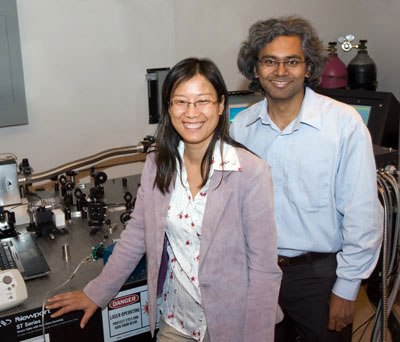 Engineering professors Bo Tan (left) and Krishnan Venkatakrishnan share a lab and a focus on nanostructures.
Engineering professors Bo Tan (left) and Krishnan Venkatakrishnan share a lab and a focus on nanostructures.
Feb 28th, 2011
Read more
TAPPI has announced keynote speakers for the 2011 TAPPI International Conference on Nanotechnology for Renewable Materials. The conference's technical focus includes both cellulose and renewable nanomaterials and their applications. The event will be held June 6-8, 2011 at the Sheraton Crystal City, Washington. D.C., USA.
Feb 28th, 2011
Read more
Researchers at North Carolina State University have developed a cheap and easy method for assembling nanowires, controlling their alignment and density. The researchers hope the findings will foster additional research into a range of device applications using nanowires, from nanoelectronics to nanosensors, especially on unconventional substrates such as rubber, plastic and paper.
Feb 28th, 2011
Read more
Nanotechnology is one of the key technologies of the 21st century. It is already of immense significance in medicine as well as industry. Together with the Vienna University of Technology and the University of Natural Resources and Applied Life Sciences Vienna, Danube University Krems has developed a postgraduate Master's program in nanobiosciences and nanomedicine which imparts interdisciplinary and practice-oriented knowledge in this sub-speciality.
Feb 28th, 2011
Read more
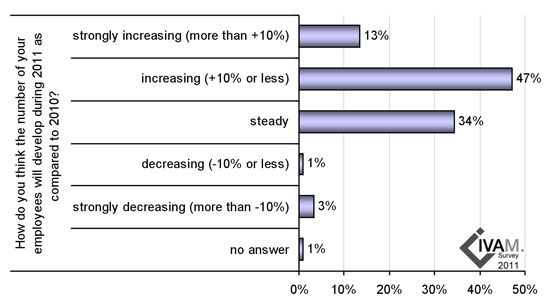 A new survey shows that European companies want to hire more employees again, their sales have risen strongly, they are aiming for new overseas markets and looking out on the new business year with confidence. However, skills shortage and a persistent difficulty to raise capital may eventually restrict the industry's growth.
A new survey shows that European companies want to hire more employees again, their sales have risen strongly, they are aiming for new overseas markets and looking out on the new business year with confidence. However, skills shortage and a persistent difficulty to raise capital may eventually restrict the industry's growth.
Feb 28th, 2011
Read more
Rare earths are an expensive and necessary component of strong permanent magnets. However, their use for this purpose can be optimised and thereby reduced. This has been demonstrated in computer simulations by a Special Research Program funded by the Austrian Science Fund FWF.
Feb 28th, 2011
Read more
From a single cell to a whole organism, the laser will play an increasingly important role in diagnosing and treating disease. So says a Duke University bioengineer who is using the latest applications of a technology invented 50 years ago to peer into the genetic material of cells, to detect the earliest signs of disease in a single cell, and to non-invasively and optically biopsy tissue inside the body for the tell-tale traces of cancer.
Feb 28th, 2011
Read more
Quantensysteme werden als frustriert bezeichnet, wenn konkurrierende Wechselwirkungen nicht gleichzeitig befriedigt werden koennen. Einem Forschungsteam der Uni Wien und des Instituts fuer Quantenoptik und Quanteninformation gelang es, erstmals Quanteneffekte von komplexen Vielteilchensystemen zu simulieren.
Feb 28th, 2011
Read more
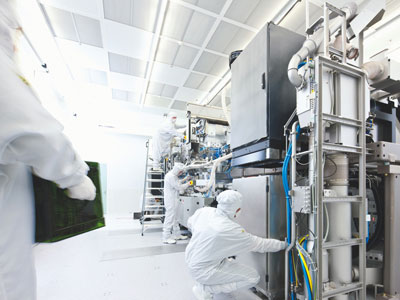 The installation of the NXE:3100, featuring a considerably higher source power and optimized optics, underscores imec's ambition to bring EUVL to production level.
The installation of the NXE:3100, featuring a considerably higher source power and optimized optics, underscores imec's ambition to bring EUVL to production level.
Feb 28th, 2011
Read more
Researchers in Japan have produced high-purity carbon nanotubes (CNTs) with a random network structure by applying the super growth technique. This CNT structure exhibits rubber-like viscoelasticity in a temperature range of -196 to 1000 C.
Feb 28th, 2011
Read more
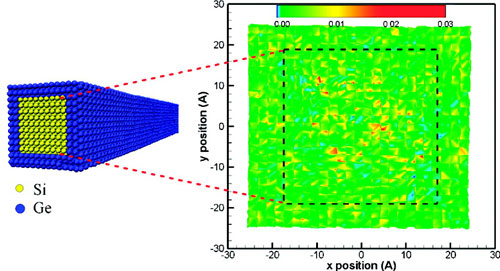 Electrical energy can be generated from a temperature difference in a circuit with suitable materials. In simulations, ETH Zurich scientists show which materials are most likely to succeed in a thermoelectric process.
Electrical energy can be generated from a temperature difference in a circuit with suitable materials. In simulations, ETH Zurich scientists show which materials are most likely to succeed in a thermoelectric process.
Feb 28th, 2011
Read more
Eine grundlegend neue Architektur fuer den Quantencomputer schlagen Innsbrucker Physiker um Rainer Blatt vor. Sie haben im Experiment erstmals die Funktion von Quantenantennen demonstriert. Diese machen es moeglich, Quanteninformation zwischen einzelnen Speicherzellen auf einem Computerchip auszutauschen.
Feb 28th, 2011
Read more
Scientists at Queen's have shown that they can deliver a gene directly into breast cancer cells causing them to self-destruct, using an innovative, miniscule gene transport system.
Feb 28th, 2011
Read more
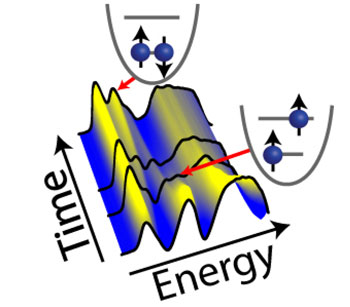 In addition to flows of electrons, researchers are seeking options for the spin of electrons to be used in future information processing. In combination with these characteristics, a considerably larger volume of information can be stored than merely 'zero' and 'one'. Because this is difficult with individual atoms, physicists place 'artificial atoms' into solids. Through his participation, a research team has now has succeeded in an energy-state occupancy readout of those artificial atoms - using common interfaces to classic computers.
In addition to flows of electrons, researchers are seeking options for the spin of electrons to be used in future information processing. In combination with these characteristics, a considerably larger volume of information can be stored than merely 'zero' and 'one'. Because this is difficult with individual atoms, physicists place 'artificial atoms' into solids. Through his participation, a research team has now has succeeded in an energy-state occupancy readout of those artificial atoms - using common interfaces to classic computers.
Feb 25th, 2011
Read more
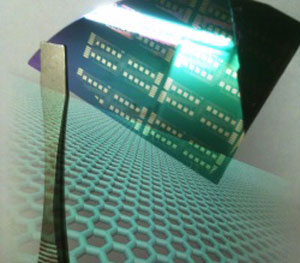 New research from the University of Pennsylvania demonstrates a more consistent and cost-effective method for making graphene, the atomic-scale material that has promising applications in a variety of fields, and was the subject of the 2010 Nobel Prize in Physics.
New research from the University of Pennsylvania demonstrates a more consistent and cost-effective method for making graphene, the atomic-scale material that has promising applications in a variety of fields, and was the subject of the 2010 Nobel Prize in Physics.
Feb 25th, 2011
Read more







 Subscribe to our Nanotechnology News feed
Subscribe to our Nanotechnology News feed